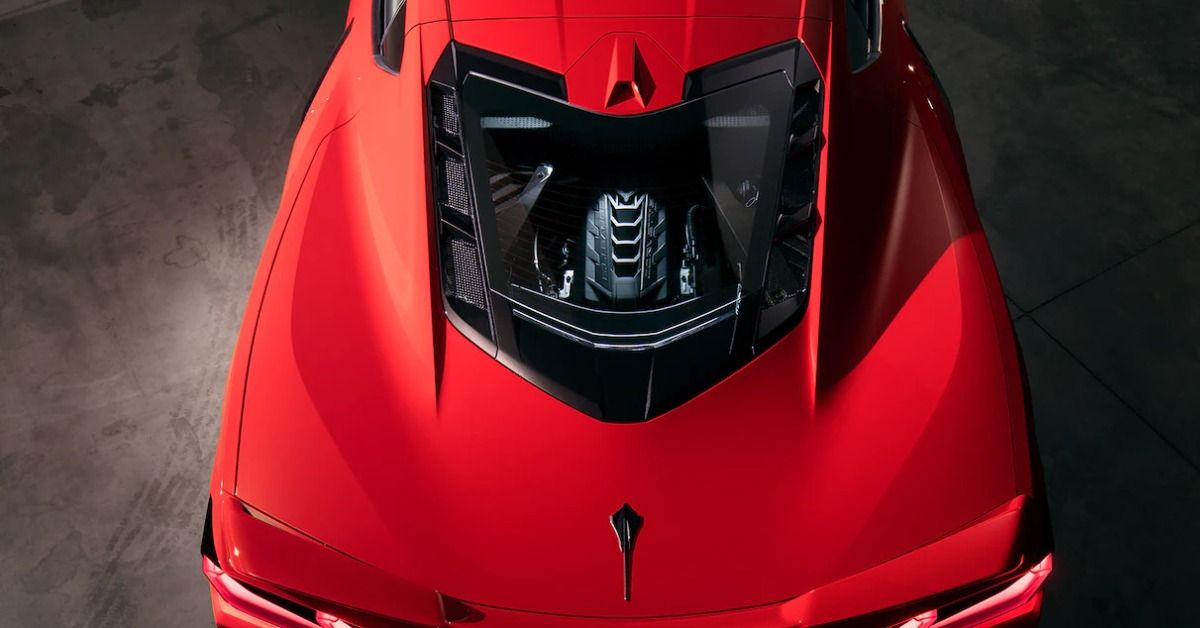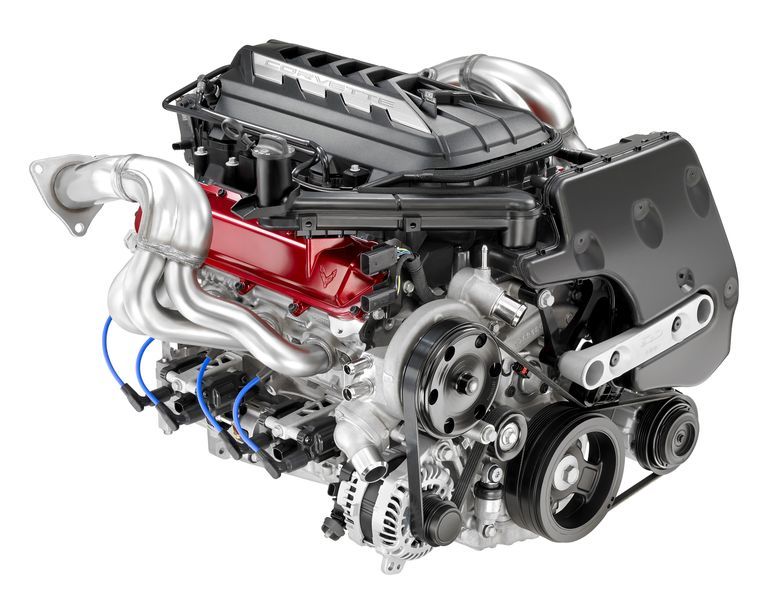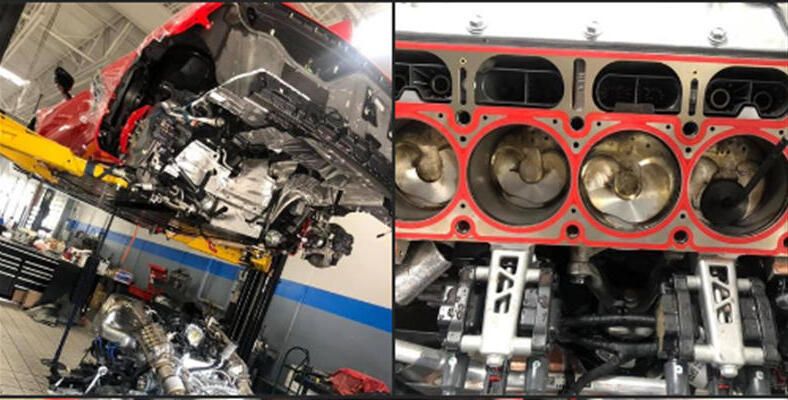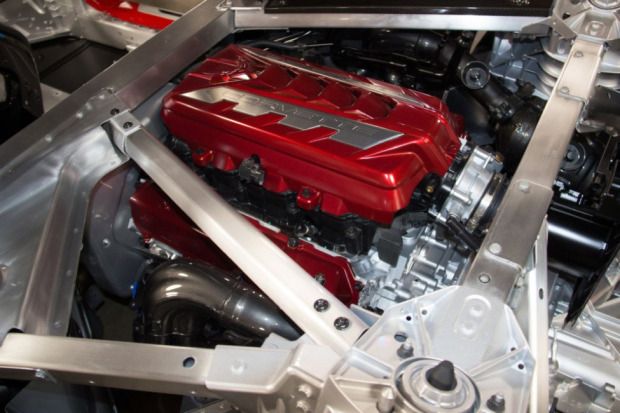After decades of groveling and begging on our knees, GM gifted us the mid-engine Corvette everyone has been waiting for, well, since the platform itself debuted almost 70 years ago. In the same span of time, GM and Chevrolet has insisted a front-engine layout does not bar it from being a supercar. But Ferrari, Lamborghini, Bugatti, McLaren, and many others would disagree.
For multiple generations, the American muscle car has labeled itself the everyday, European fighter that most individuals can afford. With the Corvette’s shift to a mid-engine layout, while retaining its ultra-low MSRP (compared to cars in its class), we can finally determine whether the Corvette is the best bang for the buck, supercar it has claimed to be for generations.
Not only will the engine receive a new positioning, but the engine itself has been completely built from scratch, specifically for the C8 Corvette: GM’s LT2 small block engine. This feature will detail overview of the LT2, performance results, common issues, and tuning abilities. This is everything you need to know about the C8 Corvette’s LT2 engine.
LT2: The Same, But Different
Debuting alongside the C8 Corvette is GM’s LT2 V8 engine. Their latest 6.2L, naturally aspirated small block motor is based upon the outgoing LT1, and features a slight bump in power and torque. Its major upgrades include a more economical intake and exhaust system, all-new lubrication system, and a new camshaft. The LT2 also sees some of its biggest changes to the fuel delivery and management systems, and some minor engine calibration adjustments.
Although the LT2 has received a handful of updates and tweaks from its LT1 predecessor, Corvette fanatics have decried its lack of major performance upgrades. Corvette chief engineer Tadge Juechter came ready with answers stating the changes are largely to meet stricter federal standards. He went on to detail that although it hasn’t received any power upgrades, nor fuel economy improvement, it should result in lower exhaust emissions. A move in which may be most important of all, based on the future of motoring and environmentally conscious options.
Performance Specs
While the LT2 hasn’t received any upgrades power wise, necessarily, GM’s decision to finally give the people the accessible mid-engine supercar we’ve been wanting for years will prove to be its heart and soul. It still provides plenty of power with 495 HP and 470 lb-ft of torque, but thanks to the engine’s relocation to the middle of the frame, the C8 is able to achieve a well-balanced 40/60 weight distribution. Considered the ideal performance layout, a mid-engine car sees a majority of its weight sit directly over its rear axle.
Why does that matter? Well with more weight sitting on top of the rear suspension, the car is capable of providing greater traction for the rear tires, allowing for more responsive acceleration, and better reliance on the rear brakes when decelerating. It should also be of reference that when the driver steps into the car, it leans closer to a 50/50 weight distribution, creating even better results.
Paired with the Corvette’s only transmission, an 8-speed DCT, it is the first time the Corvette fails to offer a manual transmission option. However, we doubt you’ll mind when the base-model C8 catapults itself from 0-60 in three seconds flat, with a quarter mile time of 11.2 seconds, and can reach speeds of 123 MPH.
Tweaks to the lubrication system see the addition of a dry sump oil system thanks to the Corvette’s enhanced track capabilities. Which allow for better horsepower performance through its prevention of oil starvation, as a result less air friction and oil viscosity.
LT2 Problems And Issues
Like most first-generation engines, the LT2 has seen its share of issues, some resulting within less than 60 miles (pictured above)! However, thanks to mob mentality and social media frenzy, these problems and issues seem to be the exception, and not the rule. But anyone in the market for the C8 should be aware of the possibility of issues that include:
- Broken valve springs
- Transmission faults
- Broken hydrocarbon pads
Broken Valve Springs
Unfortunately, when sourcing parts, a bad batch of components happens more often than desired, just ask Subaru. In a similar instance, all LT2 engines produced between June 1-September 15, 2020 received faulty valve springs, affecting other GM engines as well. When valve springs cannot seal the valves as the pushrod moves up, and the rocker arm moves down, the affected cylinder will in turn, lose compression.
Luckily this is purely a manufacturing defect and strictly limited to engines built within the dates listed above. A GM service bulletin fixed all faulty engines under warranty, if the springs were deemed to have leakage.
Transmission Faults
In what may be karma’s swift and fair judgement for failing to offer a manual transmission, the C8’s DCT transmission seems to be the most common issue plaguing the mid-engine, Vette. Owners have been reporting multiple issues which include: downshifting, hard shifts, and shuttering or bucking. It also appears to struggle getting into first gear from a standstill, and especially rough when downshifting from third to second, and second to first.
Rather than try and diagnose the obvious problems, GM has elected to replace every transmission experiencing symptoms, under warranty. Which speaks volumes to the apparent build quality of the Tremec TR-9080.
Broken Hydrocarbon Pads
First introduced in the C6 Corvette, hydrocarbon pads sole purpose is to absorb any exhaust fumes that reverse out of the engine through its intake system. Since their introduction, they have been nothing but trouble. In what must be another classic case of cost-cutting measures, the pads are sealed to the intake housing with adhesive, which of course fails easily and often when used in a setting with such high temperatures.
This causes the pads to get sucked in the air duct, restricting airflow to the cylinders, causing issues with the MAF sensor, air-to-fuel ratios, misfires, and engine codes. Luckily the pads are too big to be sucked into the engine itself, and the fix is as simple as removing the pads before use.
Tuning Capabilities
Regardless of the shortcomings of the LT2 engine, it does offer immense power; if you’re capable of hacking GM’s engine controller, that is. As multiple tuners have established already, it's certainly not as airtight as GM claims it to be.
The most obvious route is forced-induction, however when introducing such components, GM’s control units are meant to lock down the ECU, keeping the C8 from performing better than the factory allows. Tuners are running parallel ECU systems, second transmission control units, and secondary fuel systems in order to bypass GM’s safeguards.
With the first 2023 Z06 selling for an eye-watering $3.6 million at auction, the $50,000-$80,000 bill Hennessey anticipates its supercharger and twin-turbo systems will cost, seems like quite a steal.





